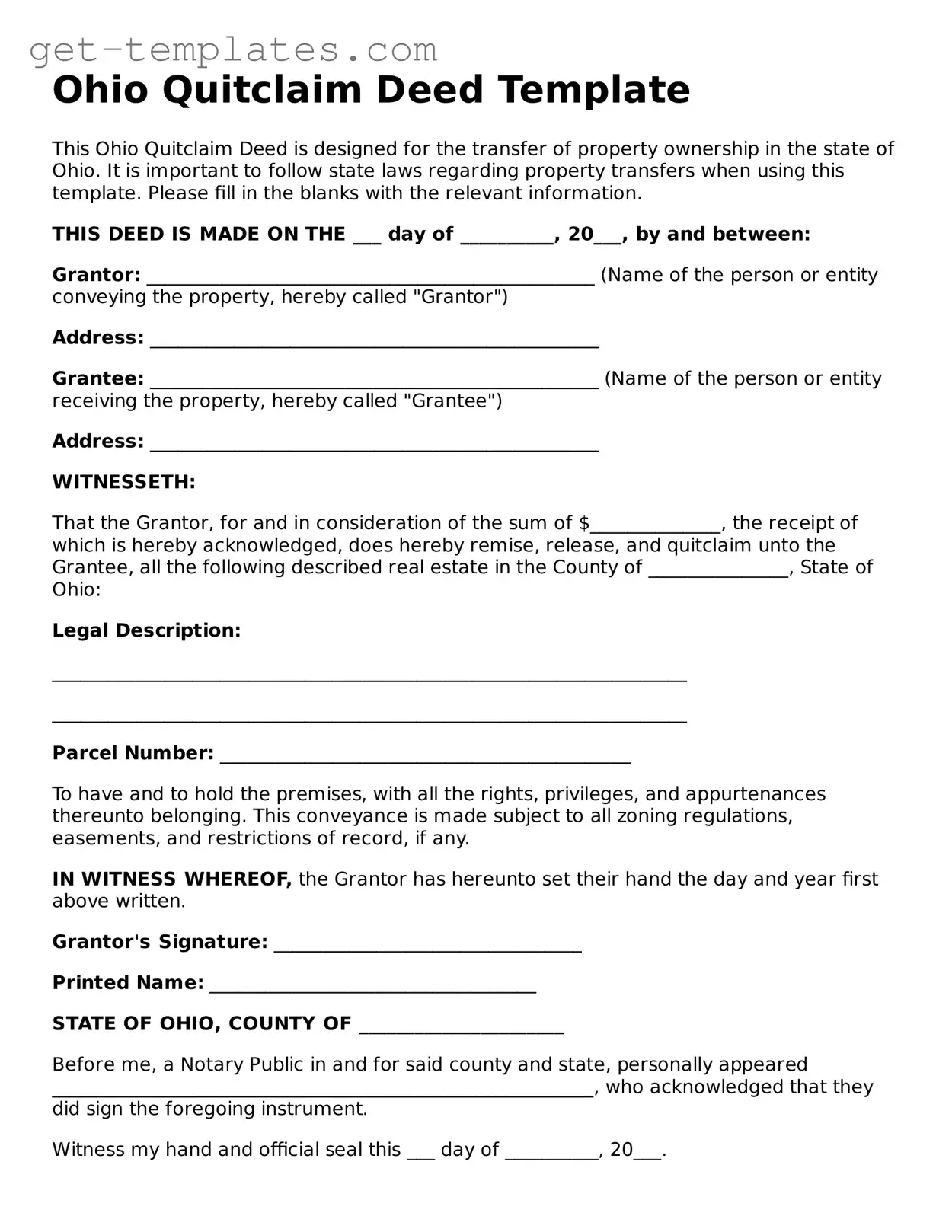Ohio Quitclaim Deed Template
This Ohio Quitclaim Deed is designed for the transfer of property ownership in the state of Ohio. It is important to follow state laws regarding property transfers when using this template. Please fill in the blanks with the relevant information.
THIS DEED IS MADE ON THE ___ day of __________, 20___, by and between:
Grantor: ________________________________________________ (Name of the person or entity conveying the property, hereby called "Grantor")
Address: ________________________________________________
Grantee: ________________________________________________ (Name of the person or entity receiving the property, hereby called "Grantee")
Address: ________________________________________________
WITNESSETH:
That the Grantor, for and in consideration of the sum of $______________, the receipt of which is hereby acknowledged, does hereby remise, release, and quitclaim unto the Grantee, all the following described real estate in the County of _______________, State of Ohio:
Legal Description:
____________________________________________________________________
____________________________________________________________________
Parcel Number: ____________________________________________
To have and to hold the premises, with all the rights, privileges, and appurtenances thereunto belonging. This conveyance is made subject to all zoning regulations, easements, and restrictions of record, if any.
IN WITNESS WHEREOF, the Grantor has hereunto set their hand the day and year first above written.
Grantor's Signature: _________________________________
Printed Name: ___________________________________
STATE OF OHIO, COUNTY OF ______________________
Before me, a Notary Public in and for said county and state, personally appeared __________________________________________________________, who acknowledged that they did sign the foregoing instrument.
Witness my hand and official seal this ___ day of __________, 20___.
Notary Public Signature: ________________________________
My Commission Expires: ________________________________
